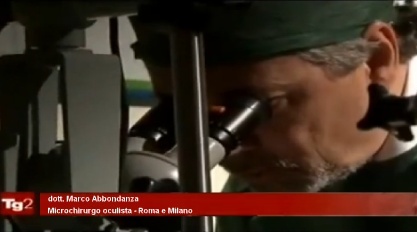KERATOCONUS: DEFINITION, CAUSES AND SYMPTOMS
Keratoconus is a non inflammatory corneal disease which progressively affects both young men and women. It is the first cause for corneal transplantation in developed countries. It normally appears during, or immediately following puberty. The problem becomes evident when the cornea bends outwards, deforming into a cone shape and thinning of the center of the cornea occurs. The refractive power of the cornea changes when this irregular deformation appears, causing image distortion and blurred vision both for near and far sight. The normal disposition of corneal proteins, which contributes to normal corneal transparency, is overwhelmed through these changes. Images are distorted and in some cases, corneal scars, and changes in the disposition of corneal proteins, prevent light from filtering correctly, causing disturbing visual reflexes. Studies show that keratoconus can be associated with one or more of the following:
.
1) Congenital abnormality of the cornea caused by genetic changes. About 7% of keratoconus carriers have a family history of the illness;
2) Chronic ocular trauma, such as rubbing eyes excessively or using contact lenses for many hours at a time and for too many years;
3) Ocular illnesses such as pigmental retinitis, retinopathy of the premature, or allergic keratoconjunctivitis;
4) Systemic illnesses such as congenital Leber’s amaurosis , Down’s syndrome, imperfect osteogenesis, and Addison’s disease.
A number of very effective treatments are now available for conservative treatment of keratoconus, each treatment has specific indications.
Through their clinical experience, the authors of these methods have devised precise methodologies for each technique and the surgeon must chose the most suitable amongst the available methods individually for each patient based on the specific case.
.

Dr. Abbondanza studies and treats keratoconus since 1984. He invented the Mini Asymmetric Radial Keratotomy (MARK) in 1993 and introduced in Italy the Corneal Collagen Cross-linking in 2005.
Therefore to benefit from the new therapeutic possibilities it is absolutely essential for the patient to undergo a complete check-up by ophthalmologists that have experience in refractive and keratoconus surgery, which may then devise a personalized therapeutic plan for each patient.
Dr. Abbondanza has been studying this pathology for over 30 years and, during his career, has become one of the leading experts on keratoconus and keratoconus conservative surgery, having been the first in Italy to use Corneal Collagen Cross-linking (2005) and having conceived himself a microsurgical technique to avoid corneal transplantation, the Mini Asymmetric Radial Keratotomy (MARK) in 1993. Thanks to these and other techniques, the need for corneal transplants keeps decreasing continuously.
.
.
Go to Keratoconus Conservative Surgery
.
